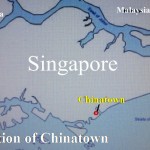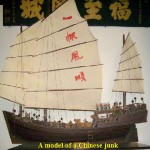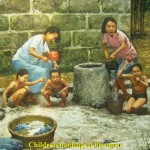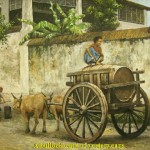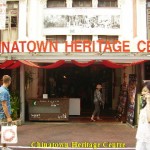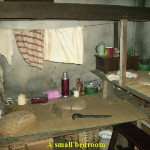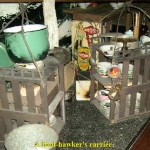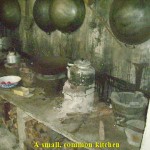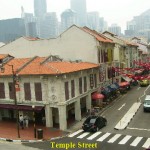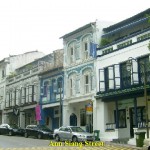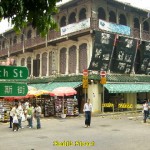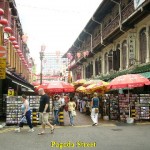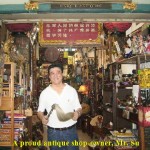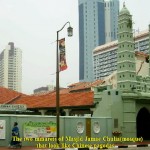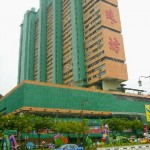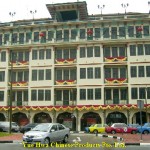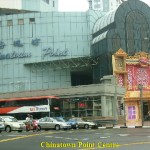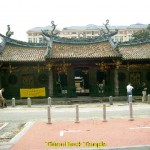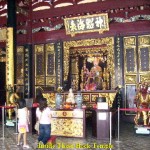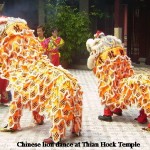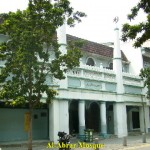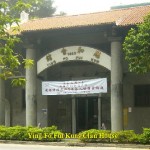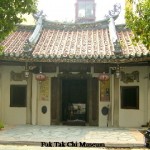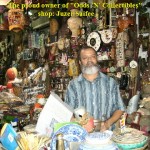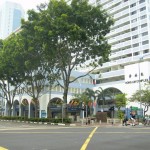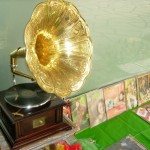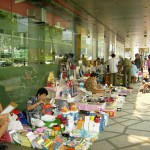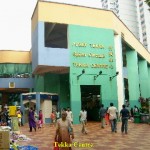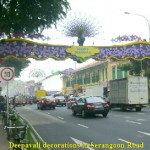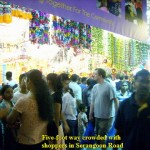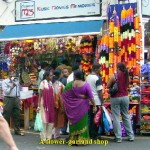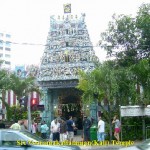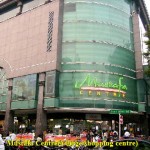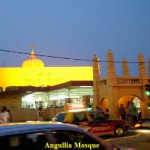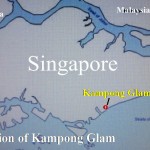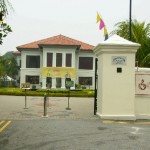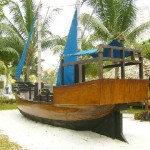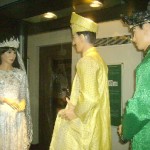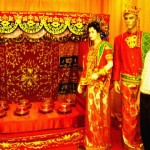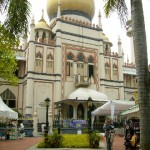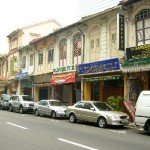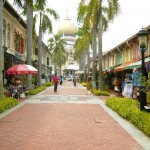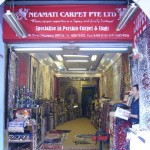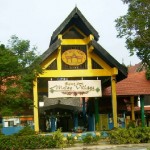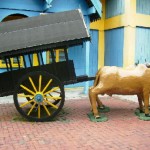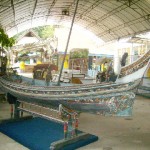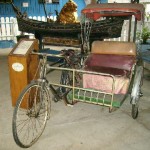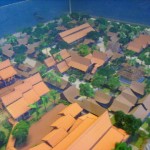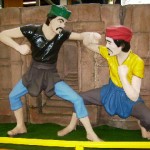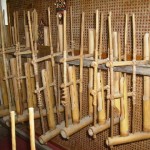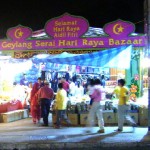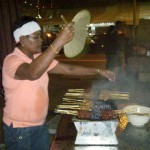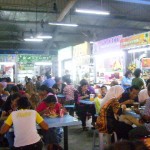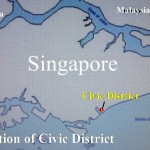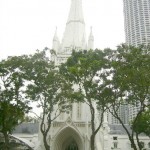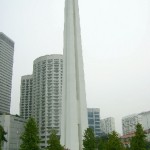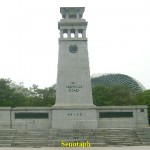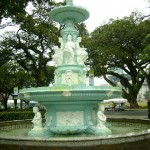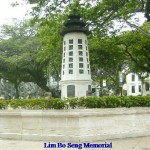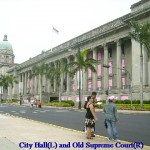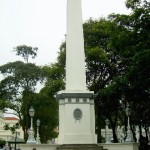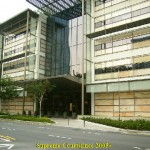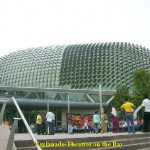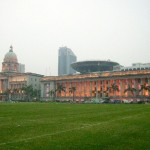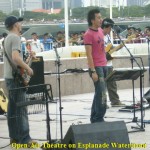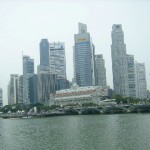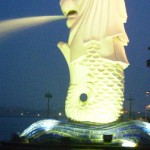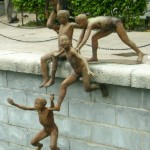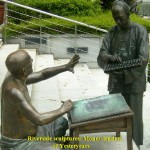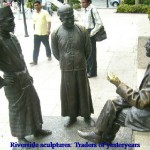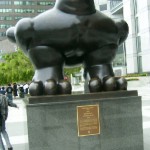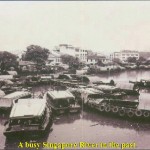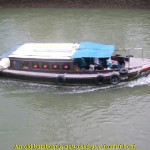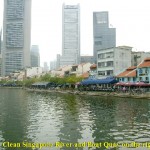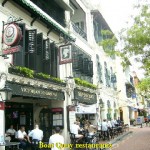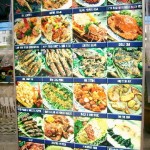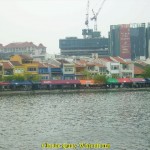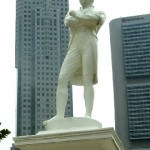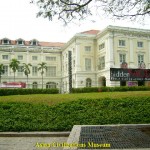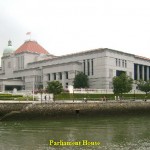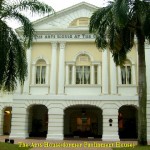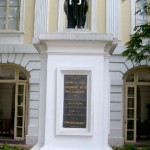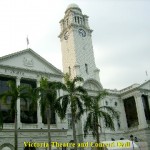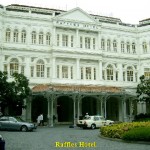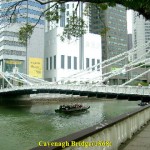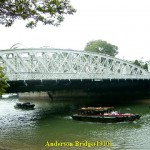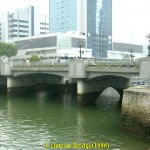Singapore Heritage Trail I
Filed under: Singapore Heritage Trail I (Chinatown & Little India)
Singapore Heritage Trail I
(Chinatown and Little India)
On a Singapore Heritage Trail
In 2006, I paid a visit to Singapore, a tiny nation, to learn about her rich history and diverse cultures. It took me a few days to visit four heritage places which are rich in histories and cultures. The four places are Chinatown, Little India, Kampong Glam-Malay Village and Civic District. Located in the south-east of Singapore Island, all these places are close to each other.
Below is what I have written about them and hope that most of the information given is still relevant:
1. Chinatown
Chinatown is located south of River Singapore. It was the first settlement for the Chinese immigrants. It was established around 1821 when the first junk which carried men from China arrived at Telok Ayer(Water Bay).
Before piped water supply was introduced in Chinatown, bullock carts were used to carry water from a nearby source called Ann Siang Hill to Chinatown. So the local Chinese called Chinatown “Niu Che Sui“, literally, it means “bullock-cart water”.
Chinatown Heritage Centre
To learn about the history of Chinatown and the stories of the Chinese immigrants, I went to the Chinatown Heritage Centre in Pagoda Street in Chinatown. It is a small museum of three restored pre-war shophouses.
Owing to poverty, famine, poor harvest of crops, drought, wars and corrupted rulers in China in the 1800’s, many Chinese migrated to the countries in South-east Asia, including Singapore. They hoped to make a fortune in the new countries and later return as a wealthy person.
The early immigrants came to Singapore in junks and later steamships. They had to endure a 7-week long and dangerous journey in vessels that were overcrowded and lacking amenities. Some unfortunate ones died in their journeys. Those who arrived at Singapore were uncertain of their future.
Many Chinese immigrants who came to Singapore realized that it was hard to make a living there. They worked as coolies, rickshaw-pullers, samsui women, food-vendors, tailors, clerks, shopkeepers, cooks, etc. Many succumbed to vices and had no money to go back to China. The hardworking ones became wealthy and made the island a progressive and prosperous country.
Squalid Living Conditions
In the olden days, many poor immigrants had to live in small cubicles in overcrowded shophouses. The latter had narrow corridors and small, dirty and black common kitchens. Looking at the squalid living conditions recreated in one of the shophouses at the Chinese Heritage Centre makes me feel sympathetic for the early immigrants.
In the past, there were small numbers of other races living in Chinatown, including Indians, Malays, Arabs and Japanese. Hence, it was a multi-ethnic and multi-cultural place.
Since 1900’s, many dilapidated pre-war shophouses in Chinatown were demolished. High-rise residential buildings and multi-storey complexes were built to replace them. The remaining old ones have been restored by the combined efforts of the owners and government. These quaint and well-restored buildings are now a tourists’ attraction in Chinatown.
It is worth visiting the Chinese Heritage Centre in Pagoda Street to learn about the Chinatown’s rich history and cultures.
Pagoda Street
It is intersting to know how Pagoda Street got its name. The Chinese saw the two minarets of a mosque, Masjid Jamae Chulia, at the end of the road that looked like Chinese pagodas. So they named the road Pagoda Street
While walking down Pagoda Street, I saw many shops and stalls in the street selling a myriad of things ranging from Asian antiques, Chinese paintings, souvenirs, clothes and cheap watches to digital cameras, cell-phones, MP3 and MP4 players. The street was crowded with both locals and tourists.
In the olden days, Pagoda Street was an infamous place for opium dens, gambling, prostitution, secret societies and slave trade. Many coolies squandered their hard-earned money on the vices, ending their dream of becoming rich and returning to their families in China. That street was the biggest residential area for coolies as the rental for a small cubicle in a shophouse was cheap.
There are a few large old shopping centres in Chinatown. Some of these are shown in the photos below:
Telok Ayer Street
This street is in Chinatown. It was once along a shoreline of the coast of Singapore. In 1821, the first Chinese junk, carrying immigrants from China, arrived in the bay. Then the immigrants set up their homes along Telok Ayer Street. Later immigrants from other countries, especially southern India, arrived there. That street then became an important commercial centre. In 1879, land was reclaimed from the bay, and roads, shophouses, clan association buildings, Chinese temples and a mosque(Al-Abrar Mosque) were built on it.
Thian Hock Temple
One of the oldest temples was built in Telok Ayer Street. It is known as Thian Hock Temple which houses a shrine to Ma Cho-Po (Mazu or Goddess of the Sea). The deity was brought from Fujian Province in China in 1840. According to a legend, Ma Cho-Po (960 A.D.-987 A.D.) was a daughter of a fisherman. One day, she sensed that her father and brother were in danger at sea during a storm. She quickly took a small boat and went to save them. But she was able to save her father only. When her whole village knew about her brave act, they worshipped her as a goddess of the sea, and the seafarers asked her for protection before sailing at the sea.
Al-Abrar Mosque
Originally, this mosque in Telak Ayer Street was a small thatched hut built by Indian Muslims in 1827. Later, it was rebuilt in 1850-1855. It is a simple-looking mosque which has an Indian Islamic theme.
Fuk Tak Chi Museum
Fuk Tak Chi (literally, it means “Temple of Virtue and Prosperity”) was also one of the oldest temples in Singapore. Located in Telok Ayer Street, it was a small temple built in 1824. Now, it is a small museum which displays some old exhibits, such as old Chinese storybooks, hawkers’ licence fee receipts, family portraits, antique furniture, weighing machines, iron that used charcoal, Chinese paintings and calligraphy, tea cups and pots and a model of Chinese junk. These things were donated by local residents.
Clan Association Buildings
Telok Ayer area has some social and meeting centres for the various Chinese clans and dialect groups. Many clan association buildings were built here to meet the needs of the immigrants like the social, cultural and political needs. An example of a clan association is Ying Fo Fui Kuns Clan House which was built in 1822. It is near Fuk Tak Chi Museum and caters for the Hakka members.
- Juzer Saifee, the proud owner of Odds ‘N’ Collectibles shop
There is a small shady garden, known as Telok Ayer Green, in Telok Ayer Street. It is next to Thian Hock Temple. in this garden, there are some interesting bronze sculptures depicting the immigrants’ activities in the past, as shown in the photos below:
An Antique Shop
While I was walking along Telok Ayer Street, I saw a shop at cluttered with lots of old things. Out of curiosity, I entered the shop. On closer look, I realized that most of the things on display were very common in every household in my childhood days, like clocks, cutlery, furniture, vases, stamps, money-notes, etc. These things can be considered as antigues now.
The shop known as Odds ‘N’ Collectibles, at 128, Telok Ayer Street, belongs to a bearded man, Juzer Saifee. He buys and sells secondhand things. He told me he had been in this business for over 10 years.
“Sook Ching”
In the city, right in front of Hong Lim Complex along Cross Road, I saw a notice-board that shocked me after reading its information. It says:
“This site was one of the temporary registration centres of the Japanese Military Police, the Kempeitai, for screening anti-Japanese Chinese.
On 18th. February 1942, three days after their capture of Singapore, Kempeitai launched a month-long purge of anti-Japanese elements in an operation named “Sook Ching”. All Chinese men between 18 and 50 years old, and in some cases women and children, were ordered to report to their temporary registration centres for interrogation and identification by the Kempeitai and their hooded informants. Those who failed the arbitrary screening were taken to outlying parts of Singapore and executed for alleged anti-Japanese activities. Tens of thousands were estimated to have lost their lives.
For those who were spared, the “Sook Ching” screening remains one of their worst memories of the Japanese Occupation.”
As I was reading the notice, I started to picture the unfortunate Chinese being taken away for the gruesome execution. It sent a shiver down my spine. The merciless conquerors had committed cruelty against humanity.
As I was walking further down Cross Road, I was pleasantly surprised to see a flea market in Far East Square where local people spread their secondhand goods on the floor for sale. They included old gramophone, records, story-books, magazines, antiques, clothes, Mao Tze Dong’s photos, letters, documents, watches, furniture, jewelleries, etc. This flea market is open only on Sundays.
Little India – Tekka Centre
To visit the Little India which is in the east of the Singapore River and learn about the Indian heritage, I took an MRT train to Little India Station. On arrival, I came out of the station and walked to Serangoon Road. On the way to the road, I came across a large green and yellow building, Tekka Centre, and decided to have a meal there.
It houses a wet market which meets the daily needs of the local people who live in HDB flats. Vegetables, fruits, fish and meats are easily available here. Next to the wet market is a hawker centre where one can savour a variety of local food. Above the hawker centre are several shops which sell inexpensive apparel, shoes, watches, etc.
After having a hearty meal with a bowl of “ais kacang” as dessert at the Tekka hawker centre, I continued my walk to Serangoon Road. As the Indian Festival of Lights or Deepavali was approaching, the road was already heavily decorated with arches, figures of phoenixes and coloured bulbs. When the sun set, the road was colourfully-lit and local Indians thronged the shops to buy the things they needed for their festival.
Serangoon Road
Serangoon Road is one of the oldest roads in Singapore. As the Serangoon area was a fertile plain, it attracted Indian immigrants to grow rice, gambier and coconut. Later, cattle-rearing and horse-racing became the main economic activities there. As more Indians settled at the place, it became an ethnic community known as “Little India”.
Old, quaint and beautifully restored shophouses line both sides of the busy road. Most of the shopkeepers here are Indians. They sell flower-garlands. jewelleries, silver and brassware, spices, saree fabrics, spicy vegetarian and banana leaf meal, electrical and electronic goods and more.
Along Serangoon Road are two popular places of worship as described below:
a. Sri Veeramakaliamman(Kali) Temple
Located along Serangoon Road. is the largest Indian temple in Singapore. It is known as Sri Veeramakaliamman Temple. It houses a black statue of Kali, the Goddess of Power, an incarnation of Lord Siva’s wife. She has many arms which hold weapons of destruction and is flanked by her sons, Ganesha and Murugan.
This temple was first built in 1855, and in 1908 it was expanded. The prominent feature of the temple is the tall entrance tower which has many colourful statuettes of deities and mythological animals. The main door of the temple has many bells. Hoping to have their requests granted, devotees will ring these bells first before entering the temple.
b. Angullia Mosque
Not far from the above-mentioned Hindu temple is a mosque, Anguilla Mosque, where the Indian Muslims pray. It is a simple looking mosque and was built in 1898 on a land belonging to the wealthy Anguillas, a family of Gujerati traders.
Mustafa Centre
As I was walking along Syed Alwi Road, I stopped at a well-known shopping complex, Mustafa Centre. It was opened in 1973. When I was in the building, I was awed to see every floor full of goods. A shopper will have no problem of getting anything he wants here and it is open 24 hours everyday.
(continued on Singapore Heritage Trail II)
Singapore Heritage Trail II
Filed under: Singapore Heritage Trail II (Malay Heritage & Civic District)
(continued from Singapore Heritage Trail I)
Singapore Travel II
(Malay Heritage and Civic District)
3. Malay Heritage
To learn about the Malay heritage, I visited two places, viz. Kampong Glam and Geylang Serai.
Kampong Glam
Located at the mouth of the Rochor River, Kampong Glam was originally a Malay fishing village. It is named after a tree by the Malays. Its scientific name is melaleuca leucapan, a large tree that is used for making poles, posts, boats and other things.
In the past, Kampong Glam was a centre of Islamic Studies where the aspiring Muslims from neighbouring countries would prepare themselves for the pilgrimage to Mecca. Those who failed to make it were called “Haji Singapura“.
Kampong Glam was the first Malay settlement in Singapore designated by Sir Stamford Raffles in 1820’s. Sultan Ali Iskandar Shah built a two storey Palladian architecture-styled palace, Istana Kampong Glam, in 1840’s. It was believed that George Colemen designed the palace. It is located at the end of the road named Sultan Gate.
Istana Kampong Glam or Istana Sultan(Sultan Palace)
Istana Kampong Glam or Istana Sultan is now a museum showcasing the history and cultures of Malay and Bugis in Singapore. The Bugis were brave seafarers from the southern Sulawesi Island of Indonesia. They played a vital role in the Malay Sultanate’s politics by the 18th. Century. Some were appointed as viceroys and married into the Malay royalty.
The museum houses several galleries such as the history and cultures of the Singapore’s Malays, Bugis seafarers, Malay royalty, Malay entertainment industry, and many more. Below are some of the photos taken at the Istana Kampong Glam (museum):
Sultan Mosque
Built in 1824 near Bussorah Street was Sultan Mosque. It was built by Sultan Hussein Shah with donations from Sir Stamford Raffles and the East India Company. In 1924-1928, the mosque was rebuilt to replace the old one. It is the largest mosque in Singapore. The local Muslims consider it to be the grand national mosque in Singapore. It has a large golden dome that is easily seen from far.
In front of the mosque is Bussorah Street where the old, quaint two-storey shophouses sell souvenirs, apparels, curios, postcards, traditional Malay cuisine, artefacts, handicrafts, etc.
Arab Street
In the early years, the Arab immigrants set up shops along Arab Street. The area around Arab Street, Baghdad Street and Bussorah Street was once a cultural and historical centre of Islamic life. Many quaint and restored buildings still remain in this area. They are now shops which sell Islamic things such as skull caps and prayer rugs, carpets from the Middle East, traditional batiks from Malaysia and Indonesia, textiles and other goods from Japan, Korea and Europe. Jewellery, artefacts, handicraft and furniture are also sold here.
Geylang Serai
Having visited the Istana Kampong Glam museum, I went to another museum, Malay Village or Malay Heritage Centre, in Geylang Serai, to learn more about the Malay heritage. To go there, I took an MRT train to the Payar Lebar Station. Then I walked a short distance to Geylang Serai where the indigenous Malays have lived since 1840’s.
Malay Village (The Malay Heritage Centre)
Tthe Malay Village covers an area of 2.2 hectares which was opened in a grand style in 1996. It is truly built like a Malay village with its entrance in a shape of a horn-roofed Minangkabau structure.
The Malay Village showcases all aspects of the Malay culture and tradition in Singapore such as kampong life in the 1950s-60s, musical instruments, bridal chambers, house or thatched house on stilts, weapons, arts, handicrafts, fishing equipment, famous Malay singers, prominent Malay political leaders and more.
Below are some of the photos taken at the Malay Village featuring the Malay culture:
More photos of the Malay culture below:
At the Malay Village, there are Malay kampong shops selling souvenirs, traditional herbs, batiks, baju kurung etc. and an open-air food court where Malay delicacies are served, such as sizzling grilled meat and noodle soup with shredded chicken meat.
Geylang Serai Bazaar and Market.
As it was the Muslims’ fasting month of Ramadan in 2006, the streets in Geylang Serai were decorated with coloured bulbs, arches and objects in the shapes of a crescent moon and star. When night fell, the whole place was brightly-lit and streets were crowded with people. In fact, there was an atmosphere of festivity then. Some local Muslims could be seen breaking fast at food-stalls at the Geylang Serai Market or bazaars while others busy shopping for new shoes, clothes, artificial flowers, cookies and other things for the birth of the new moon of Syawal or Hari Raya Puasa.
4. Civic District
On the following day, I took an MRT train to the City Hall MRT station to visit the Civic District in the city centre. It is one of the tourists’ favourite destinations in Singapore. It is located at the mouth of Singapore River and on the northern bank of the river stretching from the river mouth to a few km inland. This district is rich in history. There are many historical landmarks which are the legacies of the British colonial rule in this area.
When I was in the Civic District, I tried to visit as many landmarks as I could, including those mentioned below:
St. Andrew’s Cathedral
As I was walking along St. Andrew Road for a short distance from the City Hall MRT station, I saw the first historical building. It was a majestic, white church built in the early English Gothic style. It has spires of over 60 metres tall.
The church is known as St. Andrew’s Cathedral and is the Singapore’s oldest Anglican church. Indian convict labour was used to build it between 1856 and 1864 replacing the old one which was damaged by lightning twice. The damaged old church was rebuilt in 1834-1837.
In the colonial days, the church was mostly patronized by the elite. Walking inside the large nave of the church, I could see many plagues on the walls that were dedicated to important people in the past. This church was gazetted a monument in 1973.
Monuments
a. Civilian War Memorial
While walking to Stamford Road, I saw four identical columns of about 70 metres tall standing close to each other in a garden. They were erected in dedication to the civilians of the four main races (Chinese, Malay, Indian and others) who were killed during the Japanese Occupation in Singapore (1942-1945). An urn containing the ashes of unknown victims is placed in the middle of this simple but sombre monument that is known as Civilian War Memorial. Leaving the civilian war monument, I walked towards south and came across more monuments. Below are some of them:
b. Tan Kim Seng Fountain
This Victorian cast-iron fountain was built by the Municipal Council in 1882 to commemorate a well-known trader and philanthropist, Tan Kim Seng, who had contributed much to the well-being of the society. He had made a large donation to the Singapore Waterworks to alleviate the water problem in the city.
c. The Cenotaph
This tower-like structure was erected in 1922 in memory of those who perished in World War I (1914-1918) and it is also dedicated to those fallen soldiers in World War II (1941-1945).
d. Lim Bo Seng Memorial
This pagoda-like structure with four bronze lions standing in guard was built in 1954 in memory of a Singaporean hero, Lim Bo Seng. He led Force 136, an anti-Japanese resistance movement, in World War II. In 1944 he was captured by the Japanese in Malaya. The latter tortured him to death as he refused to reveal his fellow resistance fighters. After the war, he was buried in Singapore with full military honours.
f. The Dalhousie Obelisk
This tall pointed stone pillar was erected to commemorate the visit of Governor-General of India, Lord Marquis Dalhousie, and his wife in 1850 when Singapore was a thriving port. The local rich merchants donated money to build that structure in the hope that his visit would lead to great improvements in public works, amenities and the administration of Singapore. Later, they were disappointed as nothing concrete materialized from their wish.
City Hall
Later, I walked to a road, Connaught Drive, where I could see across a green field (locally known as “Padang”) two large old stately buildings with Corinthian columns standing next to each other. The one with a green dome is the Supreme Court whereas the other the City Hall.
Built in 1929, the City Hall was formerly known as the Municipal Building. It was renamed as City Hall in 1951 when Singapore was conferred city status by King George VI of Englnd. This building will become a national art gallery by 2010 as part of the civic and cultural district.
Supreme Court
Supreme Court was built in 1937-1939 next to the City Hall. It was the former courthouse of the Singapore’s Supreme Court. On 20 June 2005, the Supreme Court was moved to a new building just behind it. The old building is planned to become an arts and cultural centre in future.
New Supreme Court
The new supreme court in sharp contrast to the old one, architecturally. It is modern in appearance. Built of steel, aluminium and glass, it has 9-storeys of 12 civil courts, 8 criminal courts and 3 appellant courts. Resting on top of the Supreme Court is a circular structure of 66m in diameter that looks like a flying saucer. It houses the court of appeal and has a public observation gallery where one can have a panoramic view of the Singapore River.
“Padang”
In front of the City Hall is a large green field which the local people call it “Padang”. It was here that the European civilians were ordered to gather and marched to Changi Prison, immediately, after the surrender of Singapore in 1941. Then four years later on 12 September 1945, ironically, the Japanese officers were made to march pass the “Padang” to City Hall where they surrendered, unconditionally.
Esplanade-Theatres on the Bay
Later, I walked towards east to Esplanade-Theatres on the Bay. Located on a six-hectare waterfront land by the Marina Bay and near the mouth of Singapore River, it was officially opened on 12 October 2002. It consists of two prominent and unique buildings which look like a thorny tropical fruit called “durian”. One of them houses the 1,600-seat Concert Hall and the other 2,000-seat Theatre. It is a performing arts and entertainment centre which boasts of world-class performances by local and international groups.
Besides, there is an open-air theatre on the 300-metres long waterfront outside the Esplanade. Free outdoor musical performances are held there on weekends.
Modern Buildings
As I was standing on the waterfront, I looked across the Singapore River and saw a spectacular view of several
awesome, tall and modern buildings, including UOB Plaza, UOB Centre, Sinsov Building, Maybank Tower, HSBC, OCBC Building and Capital Square. Some of these tall buildings are over 60 storeys high. They are in the central business district (CBD). The existence of these skyscrapers is a testament to Singapore’s fast growing economy in trade, commerce and finance.
Fullerton Hotel
The skyscrapers on the bank of Singapore River tower over a quaint but majestic building known as Fullerton Hotel. The building was first occupied by Singapore Club and Chamber of Commerce, then General Post Office and Inland Revenue Authority. Now it is a well-known five-star hotel.
Built in a neo-classic styled architecture in 1928, the hotel was voted the best hotel in Asia at the conde’ Nast Traveler Reader’s Choice Awards 2006 held recently in New York.
Merlion
When I was crossing the Esplanade Bridge over Singapore River, I saw a strange large white stone legendary animal. Located at the Merlion Park in front of Fullerton Hotel and the mouth of Singapore River, it has a head of a lion and scaly body of a fish. Its fish body is to remind people that Singapore was a fishing village before and its lion head tells the people that the nation gets its name from the Malay word “singa” which means “lion”. The Singaporean call this mythical animal “Merlion”. It is now Singapore’s icon. This animal keep on spouting water out of its mouth into the Marina Bay.
Riverside Sculptures
Strolling on the river bank, I came across some life-sized bronze sculptures seemingly involved in some activities in the olden days, such as a group of naked and playful children leaping into the Singapore River.
(Installed in 2000 and known as “The First Generation”), colonial trader, Chinese merchant, coolies, Indian money-lender (chettiar), financier, etc.
A unique modern sculpture of a large black fat bird by Fernando Botero was erected in 2000 at the back of the tall UOB building. It is a symbol of peace, serenity, joy of living and the power of optimism.
Singapore River : A Maritime Trading Hub
Singapore River is over 11 km long and flows through the city. It was once a lifeline of Singapore. During the British colonial rule, the port was at the river mouth. When Sir Stamford Raffles declared it a free port, trade flourished. More shophouses and warehouses were built at Boat Quay, Clarke Quay and other places along the river to cope with the increase in trade. Soon the river became the hub of trade, commerce and finance.
As trade had increased by leaps and bounds, larger and more ports were needed. Large terminals and harbours were built at other places to take over the maritime trading activities of the old port, such as Keppel Harbour, Jurong, Pasir Panjang and Sembawang. By the 1980’s, the river-mouth port ceased its operation.
Since wastes from residential, industrial and farm areas had flowed into the river for many years, it became smelly and dirty. In 1977, the government began to clean up the river. It took ten years to complete the task. Now the river is clean and has a pleasant sight. Speedboats and tourists’ cruise boats (bumboats) can now be seen plying on the clean river.
Bumboats
In the yesteryears, bumboats were used to carry goods to and from along the Singapore River between ships moored in the busy port at the river-mouth and warehouses at Boat Quay, Clarke Quay and other places inland. Since the trading activities in the river ceased many years ago, the bumboats are now used for carrying tourists for the river cruise.
Boat Quay and Clarke Quay
Boat Quay and Clarke Quay were important trading places along Singapore River in the olden days. When maritime trading activities stopped at the port at the river-mouth, these quays had to change their trading services.
Today, Boat Quay and Clarke Quay are food-lovers’ haunts. The quaint and clean shophouses and wharehouses are now used as restaurants, wine bars, chill-out places and entertainment hotspots. Besides, there are al fresco pups and restaurants by the river. Delicious local and exotic cuisines are served here. Singapore’s popular dishes, chili and pepper crabs, are available here. Both places are good for families and friends to wine and dine together as the places are rich in Singapore history.
Sir Stamford Raffles
Walking down the riverside, I came across a pure-white polymarble statue of a smartly-dressed man folding his arms and standing on a high pedestal. He was Sir Thomas Stamford Raffles who founded Singapore in 1819. The statue marks the site where the man and his 120 Indian assistants and soldiers landed on 28 January 1819. It was erected in 1972.
Asian Civilizations Museum
A beautiful majestic white building near the white statue of Sir Stamford Raffles is the Empress Place. It was a government office built by convicts in 1864-1867. Now it is a museum known as Asian Civilizations Museum which was officially opened in 2003. It houses several galleries including Singapore River Gallery, Southeast Asia Galleries, West Asia/Islamic Galleries, China Gallery, South Asia Galleries and Japanese Mask Gallery. On display are over 1,300 artefacts spanning 5,000 years of Asian cultures from China, India, South-east Asia, to West Asia.
I have visited the museum and feel that it is an excellent place to gain knowledge of the ancient civilizations, cultures, religions, economies, etc. in the Asian regions.
The Arts House
Behind the Asian Civilizations Museum is the oldest government building in the city. This grand mansion was built by George Coleman in 1827. Originally, it was used as a residence. Later it became the Court House and then the Assembly House of the colonial government. When Singapore gained her independence in 1965, it became the nation’s Parliament House. Then in 1999. the Parliament was moved to a new building nearby.
Now, the old Parliament House is known as ” The Arts House” where one can attend or see contemporary visual arts, music, dance, film, comedy and performances by local and international artists.
Siamese King’s Visit
In front of the Arts House is a dark bronze elephant statue standing on a tall white pedestal. It was erected to commemorate the first visit to Singapore made by a Siamese king, Somdech Phraparamindr Mahachulalonkorn, on 16 March 1871.
Victoria Theatre and Concert Hall
Not far from the Arts House is another beautiful colonial building of Neo-Classical architecture, with rusticated columns and Italianate windows. The building which is known as Victoria Theatre was first erected in 1862 as Singapore’s Town Hall.
In 1905, another building, Victoria Memorial Hall, was built next to the first one to commemorate the long and glorious reign of Queen Victoria of England (1837-1901). Then in 1909, a 45m clock tower was erected in between the two buildings linking them as one. In 1979, the Memorial Hall was renamed Victoria Concert Hall. Today, it houses the Singapore Symphony Orchestra and holds both local and international performances.
In front of the beautiful building stands a dark bronze statue of Sir Stamford Raffles, the founder of Singapore. In 1887, it was first erected at the Padang and in 1909 it was moved to the present place.
Raffles Hotel
As I walked back to the City Hall MRT station, I visited one of the 19th. century world’s most famous hotels, Raffles Hotel. Originally, the hotel was an old bungalow. Later it was rebuilt and expanded. It has been popular among tourists and famous people. The hotel is now considered as the grand dame of Singapore’s hotels.
Historic Bridges
In the Civic District, there are several old and historic bridges spanning across River Singapore which was once the island’s hub of busy trading and commercial activities. A few examples of these bridges are shown in the photos below:
Conclusion
I am glad to have visited the four heritage places in Singapore, viz. Chinatown, Little India, Kampong Glam-Malay Village and the Civic District, as I have learned so much about their histories, traditions, cultures, religions, diverse peoples and landmarks. Besides, I understand now the reasons my grandfather and father left China and came to Singapore, and the kind of life they both had in Singapore in the late 1930’s and early 1940’s.
That is all about my Singapore heritage trail. I hope the information given above is still useful to you.
The End
Written by Choo Chaw, Kluang, Johor, Malaysia

